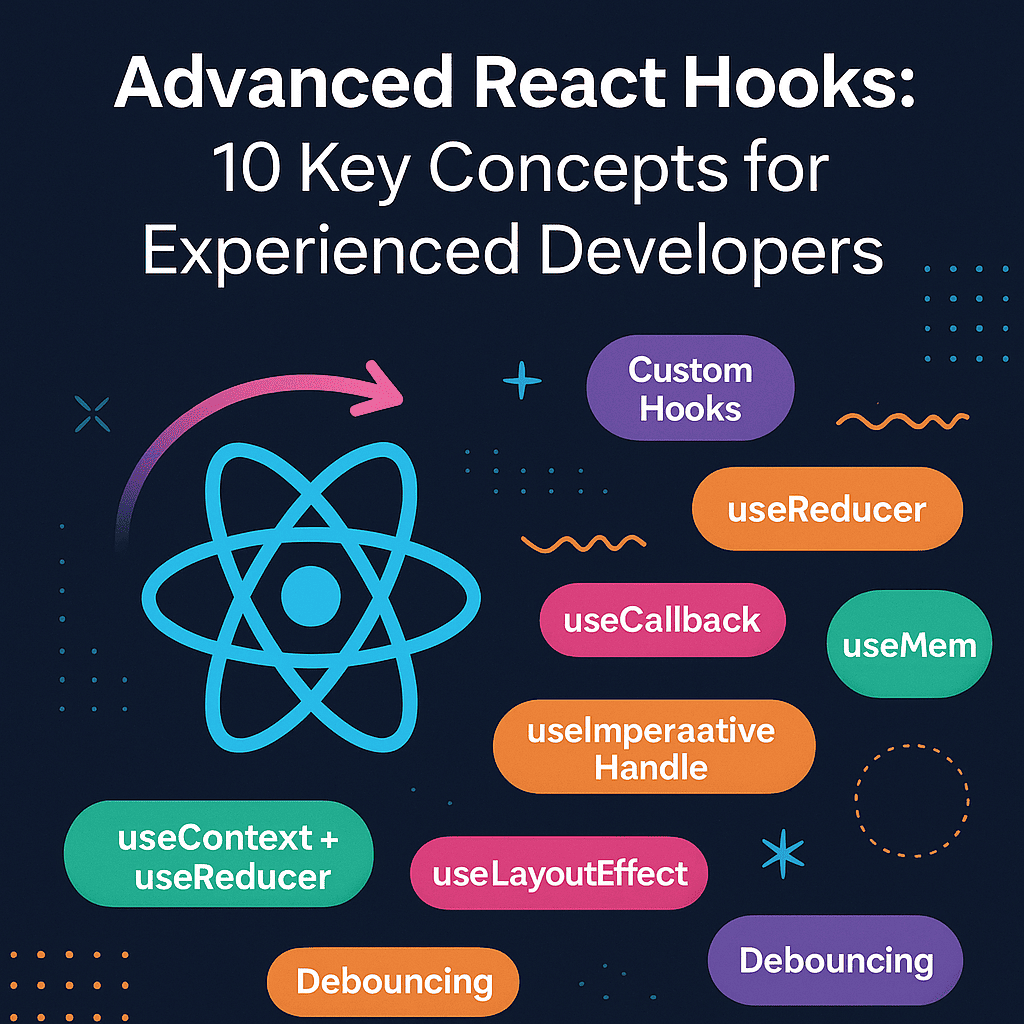React Hooks have become a vital part of modern React development. While most developers are familiar with the basic hooks like useState and useEffect, advanced hooks and patterns can significantly improve the structure, performance, and scalability of your applications.
In this blog, we’ll explore 10 advanced React Hooks concepts that every experienced developer should understand to take full advantage of functional components and build more powerful applications.
Read More: Advanced React Hooks: 10 Key Concepts for Experienced Developers
1. Custom Hooks for Reusable Logic
Custom Hooks allow you to extract shared logic into a single, reusable function. This means you can clean up your components and avoid repeating the same code in multiple places. Custom Hooks improve readability, maintainability, and consistency across your project.
2. Managing Complex State with useReducer
When state becomes complex—such as when managing forms, multiple interdependent values, or multiple state transitions—useReducer offers a more organized and scalable solution than useState. It provides a centralized way to handle actions and updates, making your state management more predictable.
3. Optimizing Performance with useCallback
Recreating functions during every render can lead to unnecessary re-renders, especially when passing functions to child components. useCallback helps by memoizing the function so it only changes when its dependencies change, which can boost performance in the right scenarios.
4. Improving Efficiency with useMemo
Expensive calculations or data processing tasks can slow down your application. useMemo lets you optimize performance by memoizing these results, recalculating them only when necessary. This ensures that your app remains fast and responsive, especially with large datasets.
5. Persisting Values with useRef
Sometimes you need to store values without causing a re-render. That’s where useRef comes in. It’s ideal for tracking values across renders, such as previous state, timeouts, or mutable data that doesn’t need to trigger updates in the UI.
6. Controlling Child Components with useImperativeHandle
In certain cases, you might want a parent component to call functions inside a child component—like focusing an input or opening a modal. This is possible using useImperativeHandle along with forwardRef. It gives the parent more control without breaking component boundaries.
7. Understanding useLayoutEffect vs useEffect
While both are used to run side effects, useLayoutEffect is called synchronously before the browser paints the screen, while useEffect runs afterward. This makes useLayoutEffect better suited for measuring layout or synchronously applying DOM changes, though it should be used sparingly to avoid performance issues.
8. Combining useContext with useReducer for Global State
If you're building a medium-to-large application and want to manage global state without external libraries like Redux, combining useContext and useReducer is a powerful pattern. It allows you to share state across components in a scalable and maintainable way.
9. Handling Debouncing with Hooks
Rapid state updates, like those from a text input, can lead to performance issues or excessive API calls. Debouncing with hooks allows you to delay these actions until the user stops typing or interacting, improving both performance and user experience.
10. Testing Hooks for Reliability
Advanced React developers know that writing tests improves code quality. Testing your custom Hooks ensures they behave as expected and makes refactoring safer. Even though Hooks are functions, they can be tested with tools specifically designed for React, helping you build more robust apps.
✅ Final Thoughts
Mastering these advanced React Hooks concepts will:
- Make your code more modular and reusable
- Improve your app’s performance
- Help scale your applications efficiently
- Reduce bugs and increase code quality
If you’re comfortable with the basics, diving into these advanced patterns is the next big step in your journey as a React developer.




